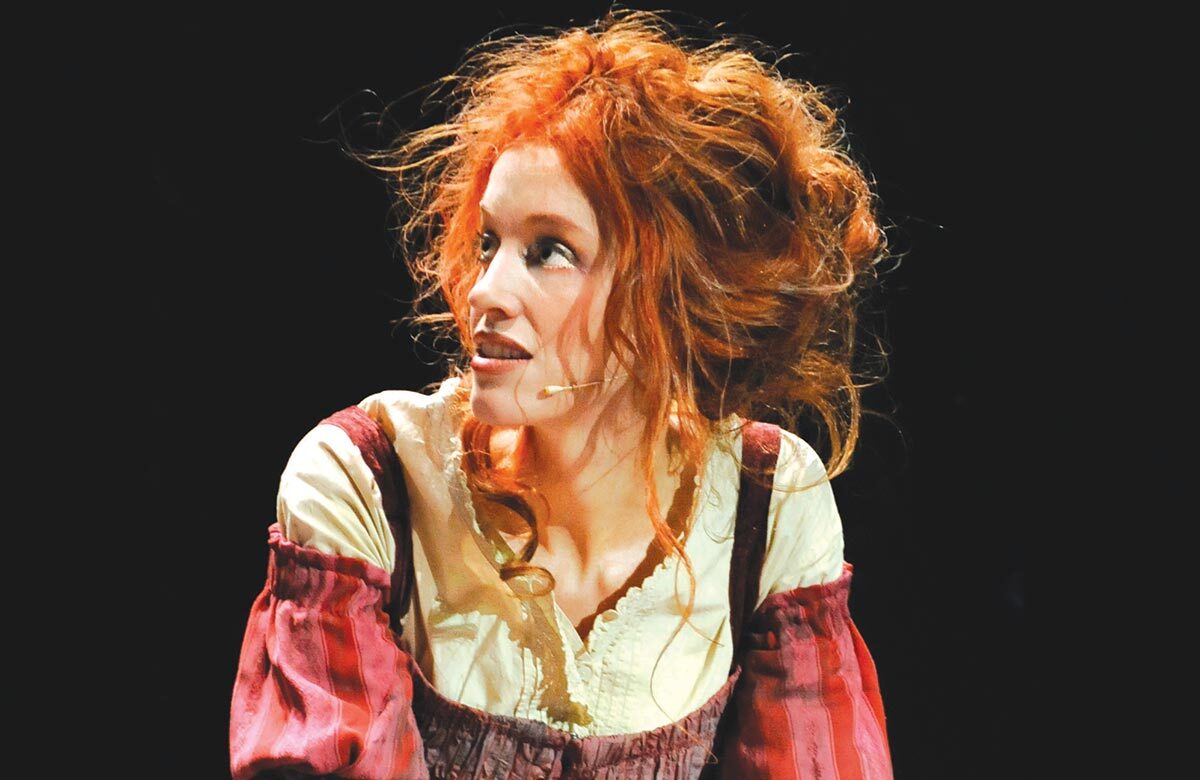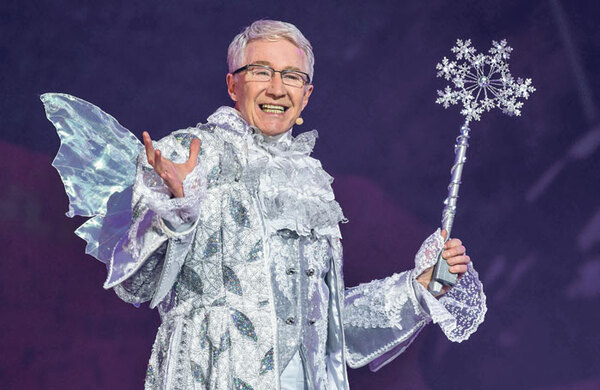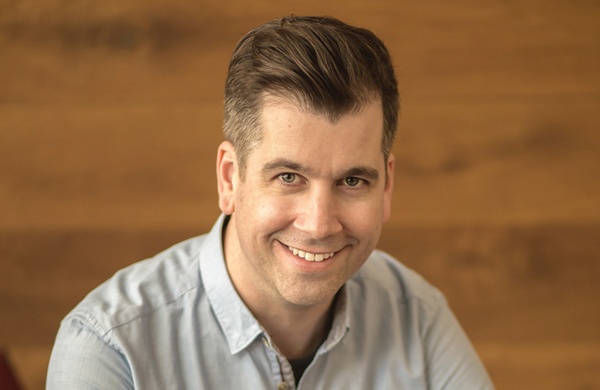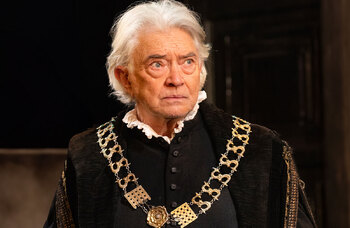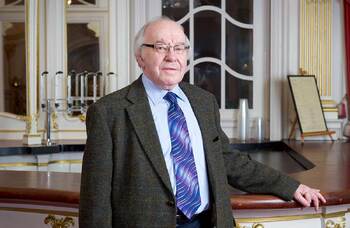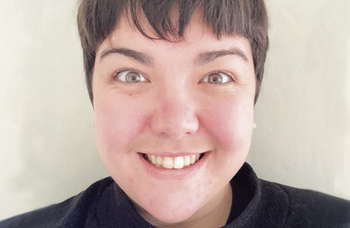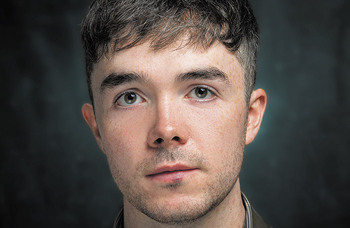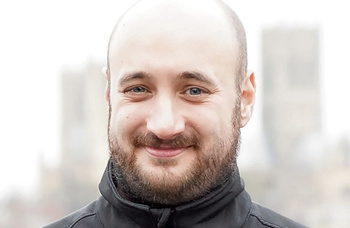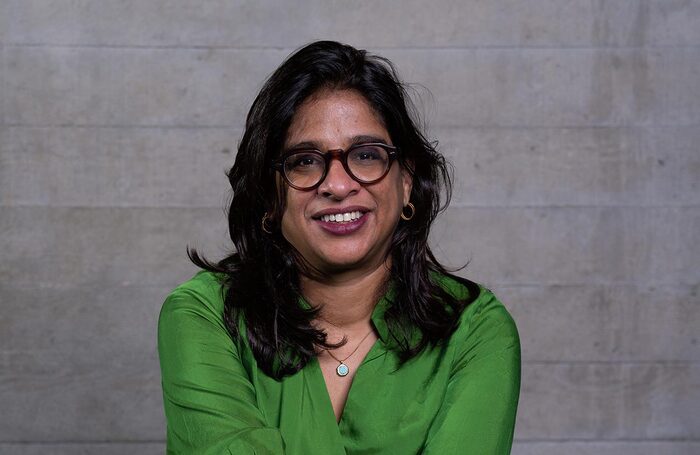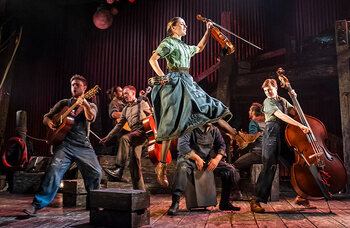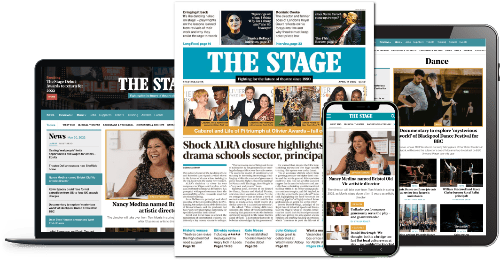Mics aren't always magic in theatre, but they can amplify the power of storytelling
Are microphones a curse or a boon? That wonderful actor Roger Allam, currently preparing to play Churchill in Howard Brenton’s Churchill in Moscow at the Orange Tree (joint winner with Nottingham Playhouse of Theatre of the Year at last week’s The Stage Awards), possesses one of the most distinctive voices in the business. He regrets that microphones are now so prevalent in theatre.
In an interview in the Times, he spoke sorrowfully about how miking is now so widespread, saying: “I don’t like amplification in theatre. Obviously it’s necessary for musicals, but it does something odd to me, something removed from the experience. Part of the glory of being in the theatre is the acoustic nature of it.”
There is a genuine pleasure in the unmiked, unfiltered experience, but technology moves on all the time and so does acting and audience expectation. The technology is so good now I wonder if audiences are aware of whether or not a show is miked.
We live at a time of brain-bogglingly speedy technological change, which is upending our lives on a daily basis, affecting how we live and work. The implications of AI for theatre are considerable and require ethical reflection. Using AI to do back-room tasks saves time and stress for those working in admin, but what about getting AI to write the Christmas panto rather than employing a writer? Theatres, at least the smart ones, are already grappling with these questions on a daily basis.
That’s necessary because theatre is often resistant to change, falling back on ‘this is the way that we have always done things’, both off stage and on. Yet technological change does and will happen whether we choose to embrace it or not. Limelight was once a radical new invention. Until it wasn’t and was superseded.
The scope and means and materials that designers now have at their disposal would astonish those who worked in the 1970s. I was recently talking with the designer Es Devlin and she pointed out something very simple: early in her career, if you wanted to research something you had to trudge to a library or a bookshop. Now, the information and images she needs are often just one click away. Less time on research allows for more time on imaginative dreaming and creating.
Technological change does and will happen whether we choose to embrace it or not. Limelight was once a radical new invention. Until it wasn’t and was superseded
Think about the advance in technologies that allowed for the development of NT Live and a new way of distributing theatre. The National Theatre was in the financial position to take advantage of better technology and it reaped huge benefits, both financial and in terms of brand. But so did audiences all around the world for whom a physical trip to the South Bank would be impossible. Live-streamed and captured performances do not replace the live theatre experience, they simply add another option and widen theatre’s scope and access.
Continues...
There is, of course, an enormous pleasure for both makers and audiences in Peter Brook’s idea that all theatre requires is an actor and an empty space. That’s particularly true in an era when space is at a premium and the pay-to-play model is the only way young makers can get noticed as established theatres programme and stage fewer shows.
But among my favourite theatremakers are Phelim McDermott and Simon McBurney, who combine the very oldest of technologies, like puppetry, with emergent technological advances. McBurney’s The Encounter was a prime example of age-old storytelling combined with cutting-edge binaural sound. It’s about choosing the right technology for the purpose; something Max Webster demonstrated adeptly with his recent revival of Macbeth. The old and the new can co-exist. Very happily.
Advanced audio and the use of microphones are not the only way, just as NT Live is not how we would want all theatre delivered. But just as the experimental theatre sector has shown how microphones can offer another way of storytelling, they are also a game changer at a time when actors and audiences are looking for a more intimate experience, but are lumbered with playhouses that are relics of a different age.
Acting styles are always in a constant state of evolution and technological advances will inevitably impact what we perceive as great acting. Many of the actors I saw in my youth spent so much time projecting to the back wall that sometimes it felt as if acting was mostly about talking at, not with, the audience.
We wouldn’t expect a contemporary designer to use only a pen and cardboard to make a set. We want them to use all the tools at their disposal. So why shouldn’t actors take advantage of technology to shape and shift the art of acting? There is more to fine acting than being able to throw your voice to the person in the worst seat in the house. Great acting is always great acting, whether it is miked or not.
Opinion
Recommended for you
Advice
Recommended for you
Most Read
Across The Stage this weekYour subscription helps ensure our journalism can continue
Invest in The Stage today with a subscription starting at just £7.99
 Lyn Gardner
Lyn Gardner